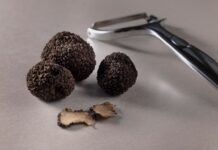In the delicate world of African violet cultivation, safeguarding against pests and diseases is paramount to maintaining the health and beauty of these beloved plants. This comprehensive guide delves into the intricate realm of pest and disease management, covering a spectrum of topics essential for growers. From identifying common pests and diseases to exploring organic and chemical treatment options, this article equips enthusiasts with the knowledge and tools needed to combat threats effectively. Learn about preventative measures to fortify your African violets against infestations and understand the causes and treatment options for common diseases. Whether diagnosing symptoms or implementing treatment strategies, this guide empowers growers to protect their African violets and nurture thriving plants for years to come.
Common pests and how to identify them
Identifying common pests affecting African violets is essential for effective pest management and plant health. Here are detailed bullet points outlining the most prevalent pests and how to identify them:
1. Aphids:
- Appearance: Small, pear-shaped insects in various colors like green, yellow, or black.
- Identification: Clusters on new growth, undersides of leaves, or flower buds.
- Damage: Sucking sap from plant tissues, causing distorted growth and yellowing leaves.
2. Spider Mites:
- Appearance: Tiny, spider-like pests, often red, yellow, or green.
- Identification: Fine webs on leaves, stems, or flowers, especially in dry conditions.
- Damage: Feeding on sap leads to stippling, yellowing, or bronzing of leaves.
3. Whiteflies:
- Appearance: Small, white, moth-like insects with powdery wings.
- Identification: Found on the undersides of leaves, often seen flying up when disturbed.
- Damage: Sucking sap leads to yellowing, wilting, and stunted growth.
4. Mealybugs:
- Appearance: Soft-bodied insects covered in a waxy, cotton-like substance.
- Identification: Clusters on leaf axils, stems, or the underside of leaves.
- Damage: Feeding weakens the plant, causing yellowing and stunted growth.
5. Thrips:
- Appearance: Tiny, slender insects, usually yellow, brown, or black.
- Identification: Rapid movement, silvering or stippling on leaves.
- Damage: Feeding causes leaf distortion and flower damage.
6. Scale Insects:
- Appearance: Small, round or oval-shaped insects with a hard covering.
- Identification: Raised bumps or scales on stems, leaves, or other plant parts.
- Damage: Weakening the plant, leading to yellowing and wilting.
7. Fungus Gnats:
- Appearance: Small, dark flies hovering around the soil surface.
- Identification: Larvae in moist soil, feeding on organic matter and plant roots.
- Damage: Larvae feed on roots, leading to yellowing and wilting.
8. Leaf Miners:
- Appearance: Larvae of small flies or moths, creating winding trails or mines on leaves.
- Identification: Whitish trails or mines on leaf surfaces.
- Damage: Leaf distortion and reduced photosynthesis.
9. Vine Weevils:
- Appearance: Small, dark-colored beetles with a distinctive snout.
- Identification: Irregular holes or notches on foliage.
- Damage: Larvae feed on roots, causing wilting and stunted growth.
10. Root Mealybugs:
- Appearance: Similar to mealybugs, but affecting roots.
- Identification: Inspect roots for clusters of mealybugs or their waxy secretions.
- Damage: Weakening the plant, leading to poor growth and eventual decline.
Organic and chemical treatments
When it comes to managing pests and diseases on African violets, growers have a range of treatment options, including both organic and chemical approaches. Here’s a detailed exploration of organic and chemical treatments for African violets:
Organic Treatments:
Neem Oil:
- Derived from the neem tree, neem oil acts as a natural insecticide and fungicide.
- Effective against a wide range of pests, including aphids, spider mites, and whiteflies.
- Safe for use on African violets and does not harm beneficial insects.
Insecticidal Soap:
- Made from natural ingredients like potassium salts of fatty acids.
- Disrupts the cell membranes of pests, causing dehydration and death.
- Effective against soft-bodied pests such as aphids, mealybugs, and spider mites.
Diatomaceous Earth:
- Consists of fossilized remains of diatoms, microscopic algae.
- Acts as a physical barrier, absorbing lipids from the exoskeletons of pests, causing dehydration.
- Effective against crawling pests like aphids, thrips, and ants.
Pyrethrin:
- Derived from chrysanthemum flowers, pyrethrin is a natural insecticide.
- Targets a wide range of pests, including aphids, whiteflies, and thrips.
- Rapid knockdown effect, but breaks down quickly in sunlight.
Beneficial Insects:
- Introduce predatory insects such as ladybugs, lacewings, or predatory mites.
- Prey on pest populations, reducing their numbers without harming the plants.
- Provides long-term pest control in a natural and sustainable manner.
Chemical Treatments:
Synthetic Insecticides:
- Chemical formulations designed to target specific pests.
- Examples include pyrethroids, organophosphates, and carbamates.
- Effective against a wide range of pests but may also harm beneficial insects and pose risks to human health and the environment.
Systemic Insecticides:
- Absorbed by the plant and translocated to all parts, including leaves, stems, and flowers.
- Provides long-lasting protection against pests such as aphids, spider mites, and whiteflies.
- Use with caution as systemic insecticides can also affect non-target organisms and contaminate the soil.
Fungicides:
- Chemicals designed to prevent or control fungal diseases.
- Available in various formulations, including contact and systemic fungicides.
- Effective against diseases such as powdery mildew, leaf spot, and root rot, but may require repeated applications for control.
When selecting a treatment method, consider factors such as the severity of the infestation, potential harm to beneficial insects, and personal preferences regarding organic or chemical interventions. Integrated pest management (IPM) approaches, combining cultural, biological, and chemical control methods, offer a holistic and sustainable approach to pest and disease management in African violets.
Preventative measures
Preventative measures are key to maintaining the health and vitality of African violets, helping to minimize the risk of pest infestations and disease outbreaks. Here’s an in-depth look at effective preventative measures:
Quarantine New Plants:
- Inspect new plants thoroughly for signs of pests or diseases before introducing them to your collection.
- Keep newly acquired plants isolated from existing ones for a few weeks to monitor for any issues.
Optimal Growing Conditions:
- Provide African violets with the ideal environment, including proper lighting, temperature, humidity, and air circulation.
- Avoid extreme temperature fluctuations and drafty conditions, which can stress plants and make them more susceptible to pests and diseases.
Good Sanitation Practices:
- Keep growing areas clean and free of debris to eliminate potential breeding grounds for pests and pathogens.
- Remove dead or decaying plant material promptly to prevent the spread of diseases and discourage pest infestations.
Proper Watering Techniques:
- Water African violets carefully, ensuring that the soil is neither too dry nor waterlogged.
- Use room-temperature water and avoid wetting the foliage to prevent fungal diseases and minimize the risk of root rot.
Regular Inspections:
- Routinely inspect African violets for signs of pests, diseases, or any other abnormalities.
- Check both the upper and lower surfaces of leaves, as well as the stems and soil, for any signs of trouble.
Integrated Pest Management (IPM):
- Adopt an integrated approach to pest management, combining cultural, mechanical, biological, and chemical control methods.
- Use natural predators, traps, barriers, and resistant plant varieties whenever possible to minimize reliance on pesticides.
Proper Potting and Soil Management:
- Use clean, well-draining potting mix specifically formulated for African violets.
- Repot plants as needed to refresh the soil and promote healthy root growth, ensuring proper drainage and aeration.
Avoid Overcrowding:
- Give African violets adequate spacing to allow for good air circulation and reduce the risk of disease spread.
- Thin out crowded areas regularly to prevent competition for resources and minimize stress on individual plants.
Monitor Environmental Conditions:
- Keep an eye on environmental factors such as humidity levels, temperature fluctuations, and light exposure.
- Make adjustments as needed to create an optimal growing environment for African violets and reduce stressors that can weaken plants.
By implementing these preventative measures consistently, growers can create a robust defense system against pests and diseases, ensuring the long-term health and beauty of their African violets.
Common diseases and their causes
African violets, like any other plant, are susceptible to various diseases that can affect their health and appearance. Understanding the common diseases and their underlying causes is essential for effective management and prevention. Here’s an in-depth look at some prevalent diseases and their causes:
1. Powdery Mildew:
- Cause: Fungal infection (Oidium spp.).
- Symptoms: White powdery patches on leaves, stems, and flowers.
- Causes: Poor air circulation, high humidity, and overwatering.
2. Root Rot:
- Cause: Fungal infection (Pythium spp., Phytophthora spp.).
- Symptoms: Wilting, yellowing leaves, stunted growth, and rotting roots.
- Causes: Overwatering, poor drainage, and contaminated soil or pots.
3. Leaf Spot:
- Cause: Fungal or bacterial infection (e.g., Alternaria spp., Xanthomonas spp.).
- Symptoms: Dark brown or black spots on leaves, sometimes with yellow halos.
- Causes: High humidity, overcrowding, and poor sanitation practices.
4. Crown Rot:
- Cause: Fungal infection (Rhizoctonia spp., Sclerotium spp.).
- Symptoms: Rotting of the crown and center of the plant, yellowing leaves, and collapse.
- Causes: Overwatering, poor drainage, and mechanical damage to the crown.
5. Botrytis Blight:
- Cause: Fungal infection (Botrytis spp.).
- Symptoms: Gray mold on leaves, stems, and flowers, often in cool, humid conditions.
- Causes: High humidity, poor air circulation, and overcrowding.
6. Virus Diseases:
- Cause: Viral infections (e.g., African Violet Mosaic Virus, African Violet Ringspot Virus).
- Symptoms: Mottled or distorted foliage, stunted growth, and reduced flowering.
- Causes: Transmission through infected tools, contaminated soil, or insect vectors.
7. Pythium Root Rot:
- Cause: Fungal infection (Pythium spp.).
- Symptoms: Yellowing, wilting leaves, and decayed, water-soaked roots.
- Causes: Overwatering, poor drainage, and contaminated soil.
8. Cercospora Leaf Spot:
- Cause: Fungal infection (Cercospora spp.).
- Symptoms: Circular, brown spots with yellow halos on leaves.
- Causes: High humidity, overhead watering, and overcrowding.
9. Rhizoctonia Crown Rot:
- Cause: Fungal infection (Rhizoctonia spp.).
- Symptoms: Rotting of the crown and base of stems, yellowing leaves, and collapse.
- Causes: Overwatering, poor drainage, and mechanical injury to the crown.
10. Fusarium Wilt:
- Cause: Fungal infection (Fusarium spp.).
- Symptoms: Wilting, yellowing leaves, and vascular discoloration.
- Causes: Soilborne fungus, contaminated soil, and poor sanitation practices.
Understanding the causes and symptoms of these common diseases is crucial for implementing effective control measures and preventing their occurrence in African violets. Proper sanitation, good cultural practices, and maintaining optimal growing conditions are essential for minimizing the risk of disease outbreaks.
Diagnosis and treatment options
Diagnosis and treatment options are pivotal aspects of managing diseases affecting African violets. Identifying the cause of a plant’s decline and implementing appropriate treatment strategies can help restore its health and prevent further damage. Here’s an in-depth exploration of diagnosis and treatment options:
Diagnosis:
Visual Inspection:
- Carefully examine the plant for symptoms such as leaf spots, wilting, yellowing, or abnormal growth patterns.
- Look for characteristic signs of specific diseases, such as powdery mildew, root rot, or leaf spot.
Symptom Analysis:
- Note the location, pattern, and progression of symptoms to narrow down potential causes.
- Compare symptoms to reference materials or online resources to identify possible diseases.
Laboratory Tests:
- If unsure of the diagnosis, send samples of affected plant parts to a diagnostic laboratory for analysis.
- Testing may include fungal or bacterial cultures, DNA analysis, or microscopy to confirm the presence of pathogens.
Consultation:
- Seek advice from experienced growers, horticulturists, or plant pathologists for assistance in diagnosis.
- Online forums, university extension services, and local gardening clubs can also provide valuable insights.
Treatment Options:
Cultural Practices:
- Improve growing conditions by providing adequate light, proper watering, and optimal air circulation.
- Remove and destroy infected plant parts to prevent the spread of disease.
Sanitation:
- Clean and disinfect tools, pots, and growing surfaces regularly to minimize the spread of pathogens.
- Avoid overhead watering and excess moisture to reduce fungal and bacterial infections.
Chemical Treatments:
- Apply fungicides or bactericides according to label instructions to control fungal or bacterial diseases.
- Choose products labeled for use on African violets and follow safety precautions.
Biological Controls:
- Introduce beneficial microorganisms or predatory insects to suppress pathogen populations.
- Biofungicides containing beneficial fungi or bacteria can help manage soilborne diseases.
Systemic Treatments:
- Use systemic fungicides or bactericides that are absorbed by the plant and translocated to all parts, providing long-lasting protection.
- Apply treatments preventatively or at the first sign of disease symptoms for best results.
Isolation:
- Quarantine infected plants to prevent the spread of disease to healthy specimens.
- Keep infected plants away from other susceptible plants until they have recovered.
Resistant Varieties:
- Choose African violet cultivars known for their resistance to specific diseases whenever possible.
- Resistant varieties are less likely to succumb to common pathogens and may require fewer treatments.
Follow-Up:
Monitor Progress:
- Regularly inspect treated plants for signs of improvement or recurrence of symptoms.
- Adjust treatment strategies as needed based on plant response and disease progression.
Record Keeping:
- Keep detailed records of diagnosis, treatment dates, products used, and plant responses.
- This information can guide future decisions and help identify trends or recurring issues.
Continued Vigilance:
- Maintain proactive measures to prevent disease outbreaks and promote plant health over the long term.
- Stay informed about emerging diseases, new treatment options, and best practices for African violet care.
By accurately diagnosing plant problems and employing appropriate treatment measures, growers can effectively manage diseases and ensure the continued vitality of their African violets.
FAQs about Safeguarding Your African Violets
Learn to recognize the signs and symptoms of common pests such as aphids, spider mites, and whiteflies, including visible damage to leaves, discoloration, and the presence of webs or sticky residue.
Explore the pros and cons of organic and chemical treatments for combating pests on African violets, considering factors such as effectiveness, safety, and environmental impact.
Discover practical tips and strategies for preventing pest infestations and disease outbreaks, including proper sanitation practices, quarantine measures, and environmental controls.
Learn about the common diseases that African violets are susceptible to, such as powdery mildew, root rot, and leaf spot, and understand the factors contributing to their development, including poor air circulation, over-watering, and nutrient deficiencies.
Gain insights into diagnosing symptoms of diseases in African violets, such as leaf discoloration, wilting, or abnormal growth, and explore treatment options ranging from cultural practices to fungicides or bactericides.
Discover organic pest control methods and natural remedies, such as neem oil, insecticidal soaps, or beneficial predators, that can effectively target pests while minimizing harm to the environment and beneficial insects.
Learn the steps to take if you notice signs of pest infestations or disease symptoms on your African violets, including isolating affected plants, identifying the pest or disease, and implementing appropriate treatment measures.
Understand how environmental conditions such as humidity, temperature fluctuations, and poor air circulation can create favorable conditions for pest infestations and disease development, and learn how to mitigate these factors to protect your plants.
Establish a routine schedule for inspecting your African violets for signs of pests, diseases, or other health issues, and learn to recognize early warning signs to intervene promptly and prevent further damage.
Explore additional resources, including books, online forums, and university extension services, where you can find comprehensive information and expert advice on safeguarding your African violets against pests and diseases.
Conclusion:
Safeguarding African violets against pests and diseases requires vigilance, knowledge, and proactive measures. By familiarizing themselves with common pests and diseases and learning to identify their symptoms, growers can intervene swiftly to prevent widespread infestations or outbreaks. Whether opting for organic or chemical treatments, the key is to choose methods that effectively target the specific pest or disease while minimizing harm to the plants and surrounding environment. Implementing preventative measures, such as proper sanitation practices and environmental controls, can significantly reduce the risk of infestations and disease development. Moreover, understanding the underlying causes of common diseases enables growers to address root issues and implement effective treatment strategies. With the insights and tools provided in this comprehensive guide, growers can protect their African violets and cultivate thriving plants that bring joy and beauty into their homes and gardens.










